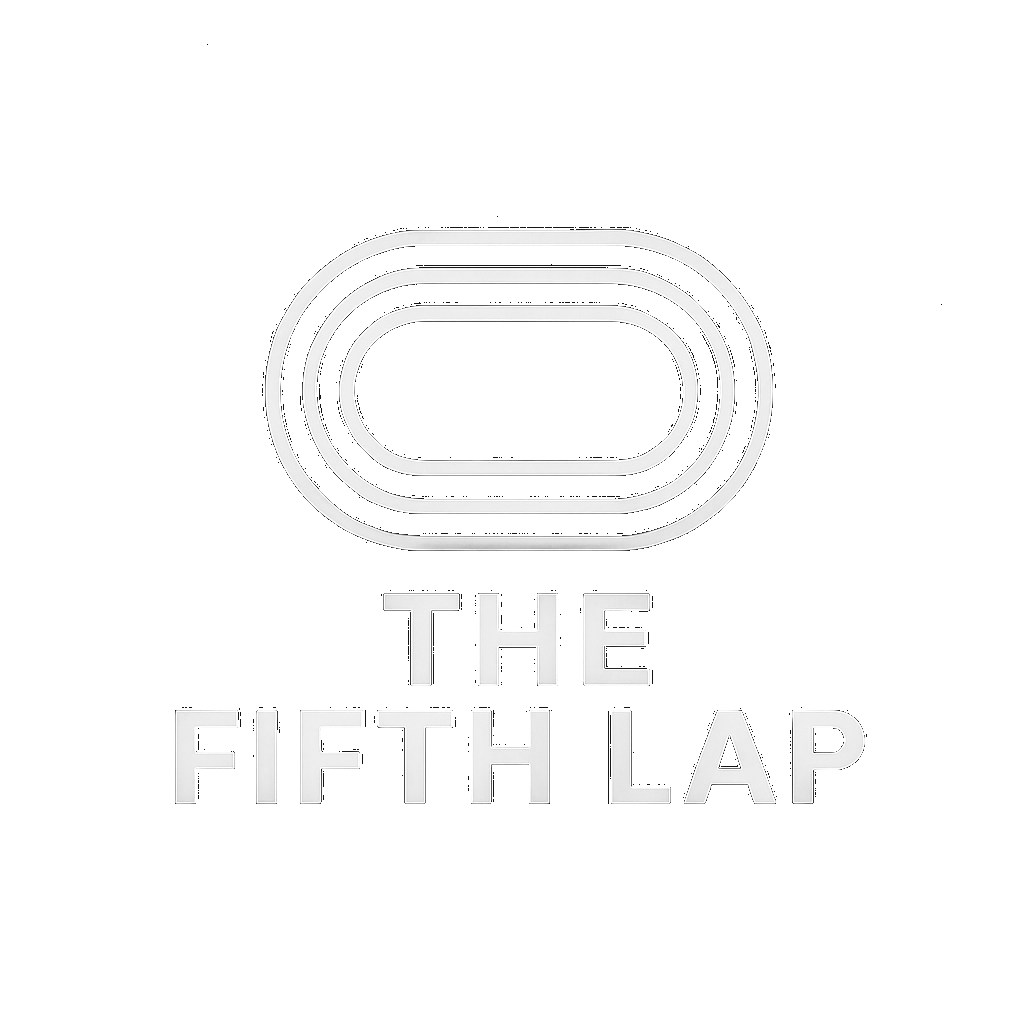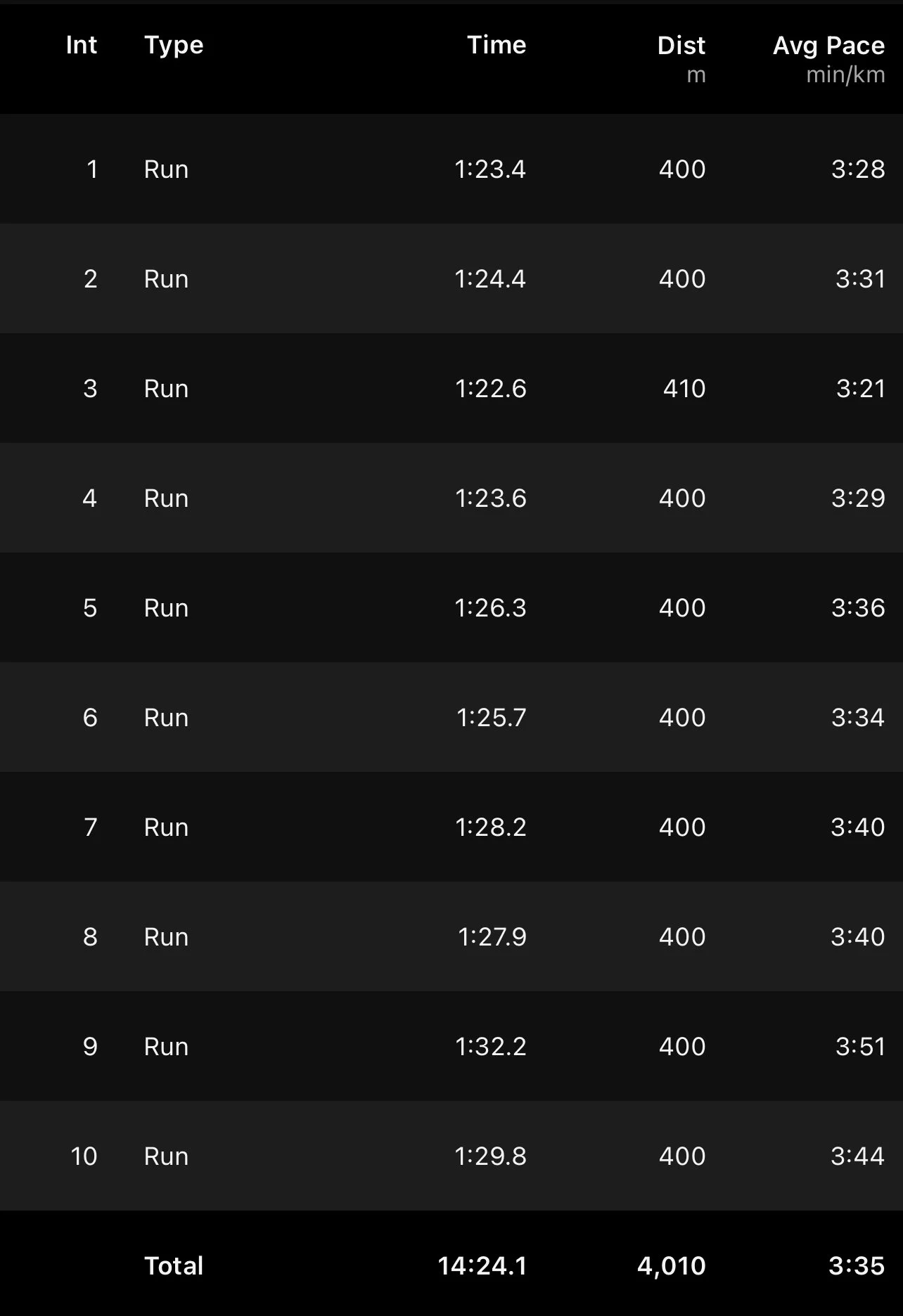Learning To Breathe
400 Meter Reality Check
Fourteen weeks out, 92 °F haze hanging over the Athens Academy track, and I’m lacing up for 10 rounds of 400‑meter sprints. After every lap, I knock out 30 seconds of squat jumps (because Hyrox won’t let you run on fresh legs) followed by 60 seconds of rest (which sounds like a lot but goes by shockingly fast). My new Shokz wireless buds swear they’re sweat-proof; consider this their baptism. And for the first time, I’m testing my carbon‑plated Puma Deviate Nitro Elite 3 on the track. The mission: learn to hold pace under pressure and teach tired legs to move fast anyway.
Workout Breakdown
Why this combo? 400‑meter repeats simulate the final stretch of each 1 km Hyrox run, when fatigue peaks and running form starts to break down. Pairing them with 30 seconds of explosive squat jumps keeps the quads under load and elevates heart rate, mimicking the muscular and cardiovascular strain I’ll face on race day.
Gear Verdict
Shokz Wireless Headphones
✅ Open‑ear design keeps situational awareness high (a win on road runs)
✅ Zero bounce—even mid-jump squat
✅ Survived the 94 °F sweat-fest
Puma Deviate Nitro Elite 3
When I first tried these on, I didn’t buy them. They felt… different. So I stuck with my usual Nike Pegasus (still a staple). But after seeing how many Hyrox athletes race in carbon-plated shoes, I circled back. The track’s bounce might be hiding their full effect, but I’m curious to see how they feel during the other functional movements.
I’ll be rotating them into more runs and definitely pulling them out for gym simulations to get a true feel. All that to say: they’ve earned their spot in the gym bag.
Tuesday: Half Marathon (Kinda) on a Bike
This Tuesday was a double cardio day for me. Track sprints in the morning, then a partner workout in the afternoon that challenged a different kind of grit.
The setup: bike just over 21,000 meters (half a marathon) as a team of two, alternating every minute. While one of us rode, the other did six dumbbell snatches (three per arm), then recovered until the next switch. We finished just under the 38:30 mark.
A few rounds in, maybe halfway through, I realized my heart rate wasn’t coming down as quickly as I wanted between efforts. It wasn’t uncomfortable, just… stubborn. I was definitely still working during the so-called “rest.” I caught myself pacing around, breathing shallowly, and decided to try something I’ve been reading about in Peak Performance: intentional recovery.
So I closed my mouth and switched to nasal breathing. Slow, steady inhales and exhales through my nose only. No overthinking. Just calm.
And it worked. My heart rate started to drop, and with recovery time still left on the clock, I felt more grounded heading back onto the bike. That small shift reminded me: it’s not just about getting through the work, it’s about learning how to recover inside of it.
That lesson keeps showing up in my training. In Peak Performance, Brad Stulberg and Steve Magness explain how real gains come not just from the stress itself, but from the rhythm of stress and rest. It’s not enough to push hard. You have to learn how to absorb the work. Chapter 2 dives into this balance, showing that the best athletes are masters of managing effort, not just dishing it out. Recovery isn’t something you wait for, it’s something you train for.
From Training Stress to Race-Day Readiness
And that carries over to race day, too.
The book talks about how elite athletes often appear calm and stoic before major events, not because they don’t feel nerves, but because they’ve trained themselves to channel those nerves. They’ve built rituals around finding calm under pressure. They know how to frame stress as excitement. According to research cited in the first half of the book, this shift in mindset: interpreting pre-race nerves not as danger but as readiness, is one of the things that separates good from great.
That’s the skill I want to bring to Hyrox.
Because it’s going to hurt. It’s going to feel chaotic. And I want to be the kind of athlete who can find her breath inside of it. Who can feel the noise and still find the voice that says, “I know this feeling. I’ve trained for it.”

